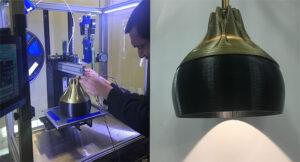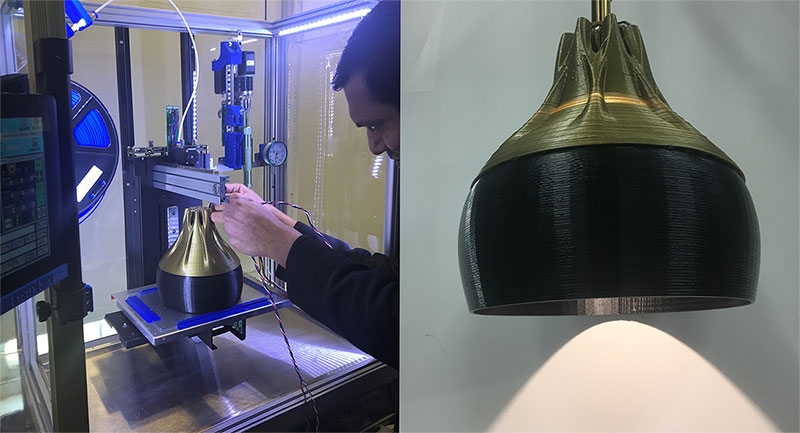How will 3D printing affect the lighting business? Hoping to answer that question, a group of manufacturers in the lighting industry recently came together earlier this year to discuss and better understand the impact of 3D printing in the lighting and allied industries. 3D printing, also known as additive manufacturing, is already being used in several industries to augment conventional manufacturing.
 The discovery workshop, organized by the Lighting Research Center (LRC) at Rensselaer in partnership with Carbon Group Global, was designed to help attendees understand the impact of 3D printing across all areas of buildings and construction, and especially its impact on lighting. Participants included leaders from Acuity Brands Lighting, Current by GE, Desktop Metal, DSM, Eaton Corp., Finelite, Focal Point, Henkel, HP, Hubbell Lighting, Lumileds, Stratasys, Tempo Lighting, Ultimaker and Carbon Group Global. The group focused on how to best assimilate 3D printing with the lighting industry, the mutual benefits to all stakeholders, and the implications to and the impact on the existing ecosystem.
The discovery workshop, organized by the Lighting Research Center (LRC) at Rensselaer in partnership with Carbon Group Global, was designed to help attendees understand the impact of 3D printing across all areas of buildings and construction, and especially its impact on lighting. Participants included leaders from Acuity Brands Lighting, Current by GE, Desktop Metal, DSM, Eaton Corp., Finelite, Focal Point, Henkel, HP, Hubbell Lighting, Lumileds, Stratasys, Tempo Lighting, Ultimaker and Carbon Group Global. The group focused on how to best assimilate 3D printing with the lighting industry, the mutual benefits to all stakeholders, and the implications to and the impact on the existing ecosystem.
The potential benefits of 3D printing include the ability for manufacturers to create custom products that are uniquely designed for spaces to be illuminated. Fixtures could be printed on-site and on-demand, benefitting the user/customer, the manufacturer and the local construction industry. With 3D printing, the manufacture of individual lighting components, such as heat sinks, electrical traces, and optics, could be customized, enabling the design of parts that cannot be manufactured today by traditional methods, improving both aesthetics and functionality. Research is still needed to advance the integration of 3D printing into the lighting industry, beyond the current prototyping stage. To date, the Lighting Research Center has conducted initial investigations into the potential for printing thermal, electrical, and optical components.
“We are thrilled to host such a pioneering effort with industry leaders who have a shared vision of adopting 3D printing in the lighting and construction industries,” said LRC director of research Nadarajah Narendran. Leading the workshop, industry veteran Govi Rao emphasized, “We are steadily embarking on the fourth Industrial Revolution, which is enabling capabilities like additive manufacturing to be adopted rapidly, thanks to advancements in artificial intelligence, machine learning and enhanced connectivity.”
The group will soon embark on developing an industry roadmap to make additive manufacturing a viable option for the lighting, building, and construction industries. For more information about the LRC’s 3D printing industry group, contact Dr. Nadarajah Narendran, narenn2@rpi.edu or visit the 3D Printing for Lighting Discovery Consortium page on the web.

